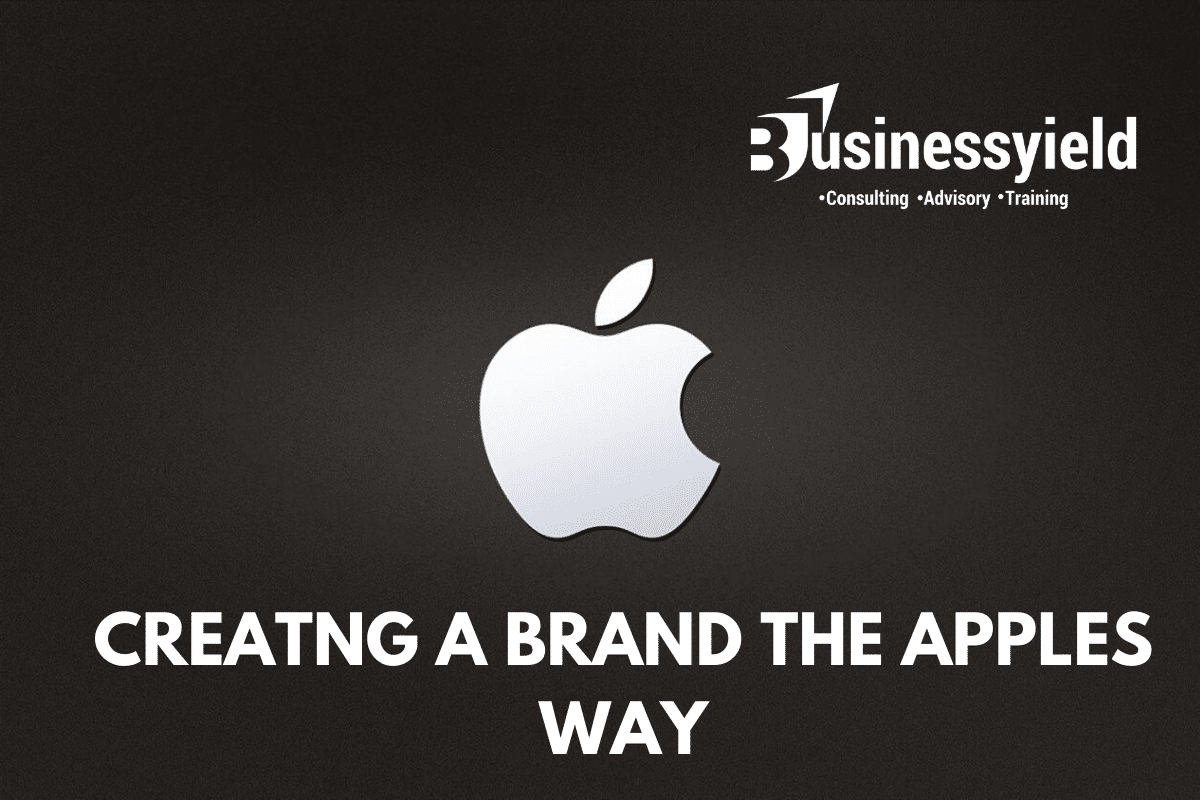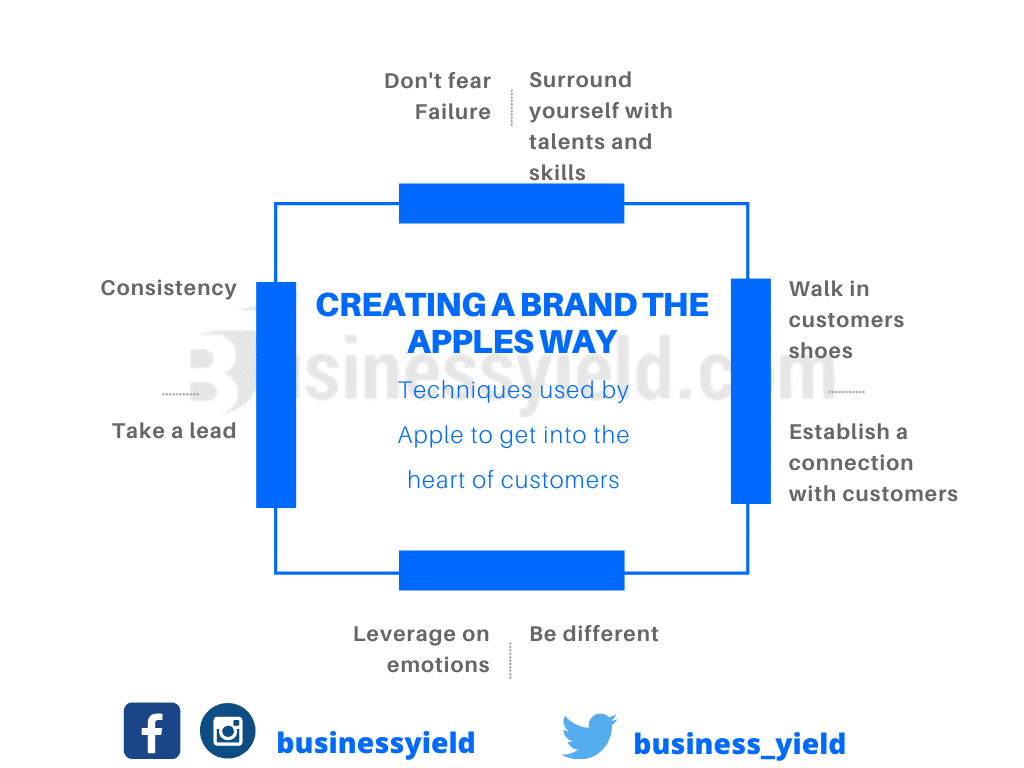Apple’s mode of creating a brand is one of the best innovations in the world. Successful brands can’t be mentioned without Apple being included. Apple’s brand is the key to the company’s success. It’s got nothing to do with its innovative products like Mac or iPad. Apple is an emotional brand. It is intimate and loved by its customers. Apple is about imagination, design, and innovation. Steve Jobs once said that “the chance to make a memory is the essence of brand marketing.” Read the post carefully, we have a lot in stock for you. The tips used to create the Apple brand promise and loyalty have been discussed in this post.
Apple Brand Promise
In the minds of consumers, there is a brand. That’s all. There is nowhere else. Your brand messaging, no matter how creative it is, cannot change the brand. It can simply raise awareness or confirm pre-existing beliefs. If consumers are aware that a brand promise is hollow, they will scoff at the gap between the message and the real customer experience.
“Think different,” says Apple.
Apple’s brand promise, which began as a shrug to IBM’s “Think,” is possibly the most famous slogan of all time and the key to Apple’s meteoric success in the computer business. Apple’s brand promise is two-fold: they promise to produce products based on perceiving the world in new ways, and they pledge to inspire their customers to do the same.
Apple Brand Loyalty
In terms of brand loyalty, Apple has long been one of the most dominant smartphone brands. According to new statistics released by experts at Consumer Intelligence Research Partners, Apple customers continue to be loyal to the company, with 90 percent of iPhone buyers staying with Apple.
According to the data, Apple has accounted for slightly under half of all smartphone purchases in the United States over the last three years. During the same time period, Samsung accounted for slightly more than half of Android sales. According to the data, Apple has accounted for 43 percent of US smartphone sales over the last three years, while Samsung has accounted for 31 percent and LG has accounted for 9 percent.
In terms of loyalty, the CIRP data shows that Apple’s loyalty rates — that is, the percentage of customers purchasing an iPhone whose prior smartphone was also an iPhone – have remained stable at 90%. Because transferring brands inside the Android ecosystem is easier, brand loyalty among Android makers is lower. Having said that, overall loyalty to Android is over 90%.
Apple brand loyalty can help explain overall share trends. Apple has the highest brand loyalty, as measured by the percentage of customers who buy a new Apple iPhone after previously owning an iPhone. For the previous three years, Apple’s customer loyalty has surpassed 90%.
Switching brands inside the Android operating system is easier than switching between Android and iOS, and over the past several years, loyalty to each operating system has maintained around 90%. Despite this, Samsung has the highest level of loyalty among Android smartphone manufacturers, with almost two-thirds of Samsung consumers having previously owned another Samsung model. While Samsung kept its loyal customers, Motorola and LG witnessed a little decline in loyalty since the fiscal year ended in September 2019.
Tips from Apple’s story in Creating a Brand
#1. Leverage on Emotion
Good branding engages emotions, reason, and connection to create a memorable identity. Branding succeeds when it connects emotionally with consumers. Customers are far more likely to remember and purchase products and services that make them feel good.
In the mid-1990s when brand recognition was low, Apple engaged in an advertising campaign that featured past heroes, both living and dead whose ideas have impacted the world. As a result, it evoked an emotional response in the viewers and helped them in creating a brand.
See Also; Branding Secrets for Nigerian Businesses
#2. Be Different
Apple has a unique visual and verbal personal statement, expressed in product design and advertising. Its products and advertising are clearly recognizable and differentiated from other brands.
Brands are therefore required to find their uniqueness. It could be their story or emotional advertisements to differentiate them from other brands.
#3. Establish a connection with customers
This can take the form of building trust and establishing a community around a product. In Apple’s case, its products are designed around people.
In other words, a brand should offer a beyond-business relationship with users. They should feel they are part of the brand. Take the customer’s feelings into consideration when creating a brand product.
#4. Walk in the customer’s shoes
This entails thinking about what the customers would expect from your brand.
One of Apple’s strengths has always been its ability to design its own new products and improve concepts to suit the customer’s needs.
To do this in your business, you need to understand the exact needs of your customers. Once you know exactly who you’re selling to, it’s easier to imagine yourself in their shoes and create innovative solutions that you believe would help them in their situations.
#5. Surround yourself with talents and skills
Your employees directly affect the quality of the brand.
A company’s reputation allows it to attract quality people, and the excellence of its staff translates into better products, services, and customer experiences.
Surround yourself with talented people who are committed to quality and are passionate about their jobs. Their professional image will feed and build your positive brand identity.
#6. Don’t fear failure
Never forget your brand’s objectives and be willing to take calculated risks that can move you toward your goals.
Rather than focusing your branding efforts on avoiding failure, emphasize the quest for success.
#7. Consistency
Have a visual brand identity.
If your visual brand identity isn’t working for you, engage in professional logo design and other rebranding tactics to find a better fit. But once you have an identity that meets your needs, it’s vital to stick with it.
Changing your look too often undermines consumers’ understanding of who you are as a company. Apple had to brand and rebrand until they got their fit.
Consistency is very essential for creating a brand.
See Also: 7 Strategies to Positioning your Business in 2022.
These are some of the techniques used by Apple to create the brand. Apple brand is one of the strongest in the world. Businesses could adapt these to create a brand for themselves.
Apple Brand FAQs (Opens in a new browser tab)
What is Apple as a brand?
Apple Inc. is an American multinational technology corporation that focuses on consumer devices, computer software, and internet services. They are also been the world’s most valuable corporation since January 2021, and the largest information technology company by sales (totaling $274.5 billion in 2020).
Why Apple is a famous brand?
Product Quality and Continuous Innovation Innovation
Apple has become a Love Mark brand as a result of its high-quality products. The company’s products are of such high quality that, despite selling millions of products over the world, defective products are nearly non-existent.
What is Apple's brand promise?
“Think different,” says Apple.
Apple’s brand promise is two-fold: they promise to produce products based on perceiving the world in new ways, and they pledge to inspire their customers to do the same.
How do Apple brand their products?
Apple promotes its products with commercials and print advertisements that emphasize how its products vary from competitors. Commercial advertisements run when a product is first introduced, and print advertisements continue throughout the product’s existence. Ads are brief and to-the-point frequently focused on a single significant characteristic of their product.







